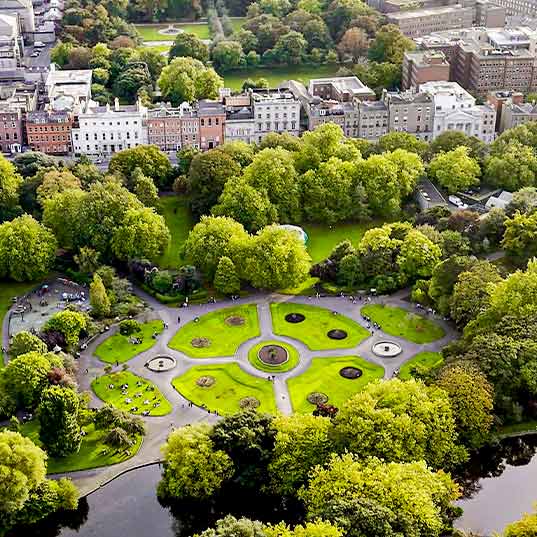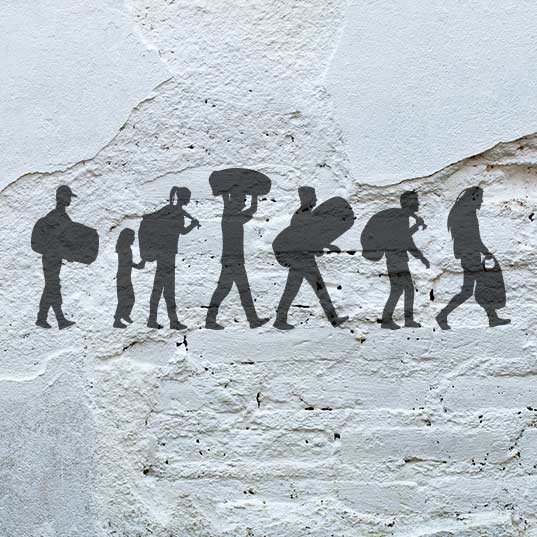Underground climate change exists and this is how we can adapt
Cracks are beginning to appear in the ground and in buildings in Chicago and other cities. This is due to underground climate change. What is this and how does it affect urban areas?
Cities and climate change have a new connecting node. Something is taking place under our feet that is already having consequences for life as we know it: underground climate change. In places like Chicago the soil is giving way due to high underground temperatures and the city infrastructure is deforming. However, research suggests that it may be possible to sustainably reuse waste ground heat.
What will I learn from this article?
- What is underground climate change?
- Implications on the earth surface
- Relationship with global climate change
What is the underground climate change experienced by cities?
You don’t need to live in cities like Venice, Tokyo or Amsterdam to see urban infrastructure exposed to natural hazards. To the violent tremors of earthquakes and the risk of flooding due to rising sea levels, we can now add a new threat: underground climate change.
This phenomenon, which is increasingly the focus of studies, can have a significant impact on the integrity of buildings, streets and roads, posing new challenges for civil engineering and urban planning.
Underground climate change is a concept that describes the rise in temperatures below the earth's surface. And no, it is not the same as global warming produced by greenhouse gas emissions. Although they do coincide in one fundamental aspect: both are caused by human activity.
This event is mainly due to the heat released by buildings and underground transportation. Concrete, asphalt, and other building materials absorb heat during the day and slowly release it at night. In addition, underground rail systems, activities in basements and heating networks also emit heat that accumulates underground.
You can download the infographic here.
Impact of underground climate change on life and cities
As the ground warms up, it also deforms. Underground climate change causes asphalt and concrete to expand and contract, threatening the structural integrity of streets and the buildings above them.
A study published in Communications Engineering found that this phenomenon can displace the foundations of buildings vertically, lifting them by up to 12 mm or sinking them by as much as 8 mm, possibly resulting in cracks and corrosion.
Chicago is the first city where these consequences are being examined. The area under study is the Chicago Loop, the city's financial district. Alessandro Rotta Loria is assistant professor of civil and environmental engineering at Northwestern’s McCormick School of Engineering the lead author of the study. The researcher and his team installed more than 150 temperature sensors in different underground locations in the city.
They also placed control sensors in Grant Park, a green area next to Lake Michigan away from the urban core of the city. The data they collected indicates that underground temperatures under the financial district were up to 10 °C higher than in Grant Park.
“The ground is deforming as a result of temperature variations, and no existing civil structure or infrastructure is designed to withstand these variations. Although this phenomenon is not dangerous for people’s safety necessarily, it will affect the normal day-to-day operations of foundation systems and civil infrastructure at large.” says Rotta Loria in McCormick School Engineering News.
“The data they collected indicates that underground temperatures under the financial district were up to 10 °C higher than in Grant Park.”
Transforming the problem of underground climate change in cities into an energy solution
To mitigate underground climate change, Rotta Loria’s proposal is to insulate underground spaces in cities: basements, parking lots, etc. About 70 to 80 percent of a building's heat emanates from underground areas, where furnaces, boilers and other mechanical systems are located.
But in his study he also suggests that we can recycle the underground heat that we accumulate and use it in our heating systems. Experts propose integrating geothermal technologies that could take advantage of that excess heat, convert it into energy, and use that thermal energy to heat buildings.
This way, we would not only heat our homes when it is cold, but we would reduce our dependence on fossil fuels, a key factor in this climate crisis.
“We can recycle the underground heat we accumulate and use it for our heating systems.”
In conclusion, underground climate change is an emerging phenomenon that poses significant challenges for urban infrastructure. However, it also presents a unique opportunity to adapt to this new challenge, as is leveraging underground heat for our heating systems. As we move forward, it is crucial that we continue to research, adapt and seek sustainable solutions to protect our cities and our planet.
Sources:
- https://www.fastcompany.com/90925323/underground-climate-change-exists-heres-how-cities-should-prepare-for-it
- https://www.activesustainability.com/construction-and-urban-development/urban-heat-island/







